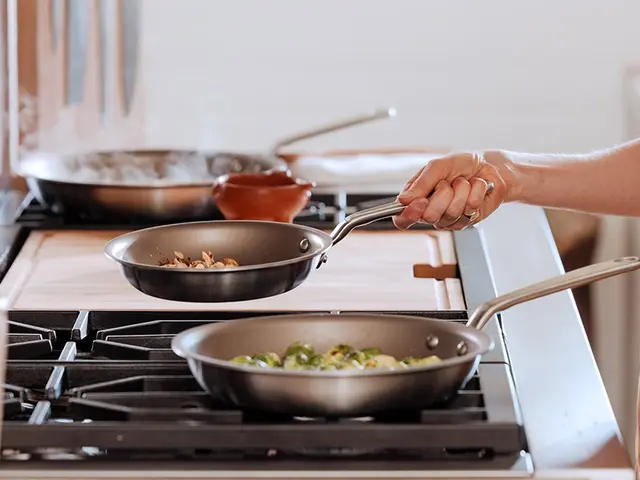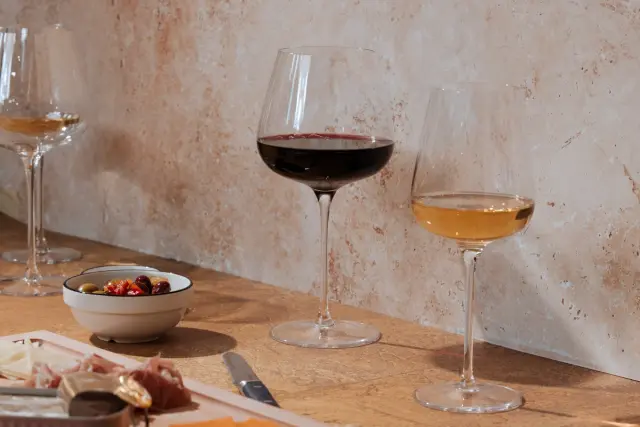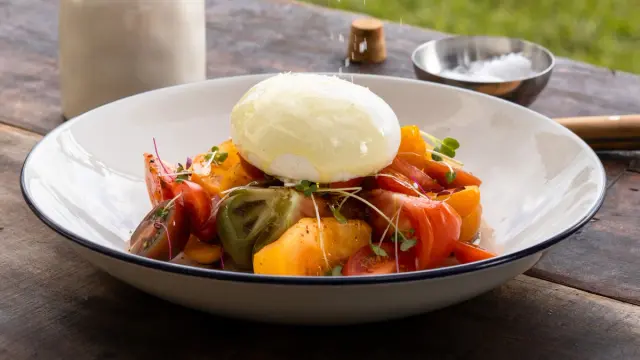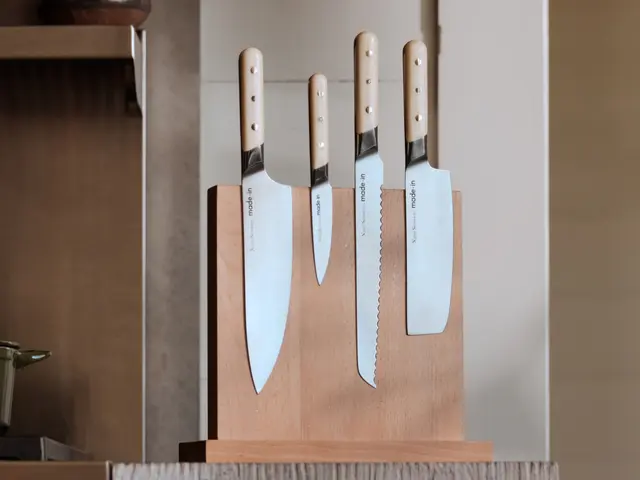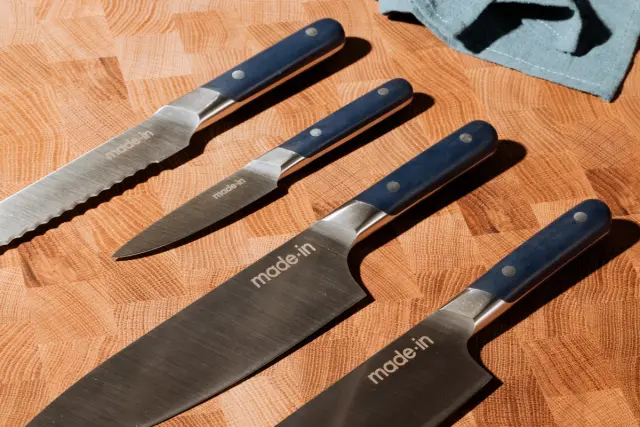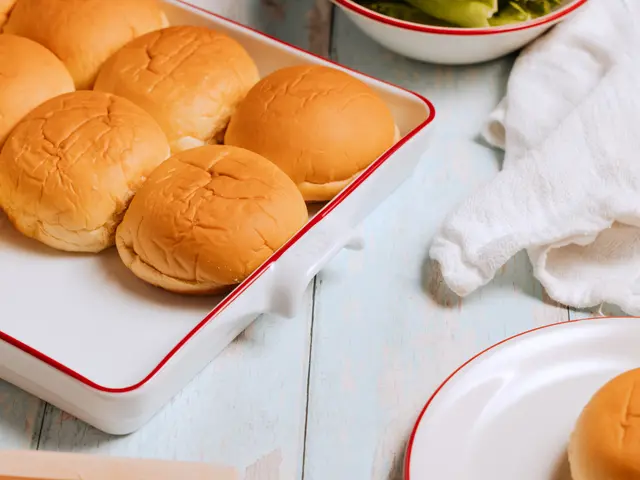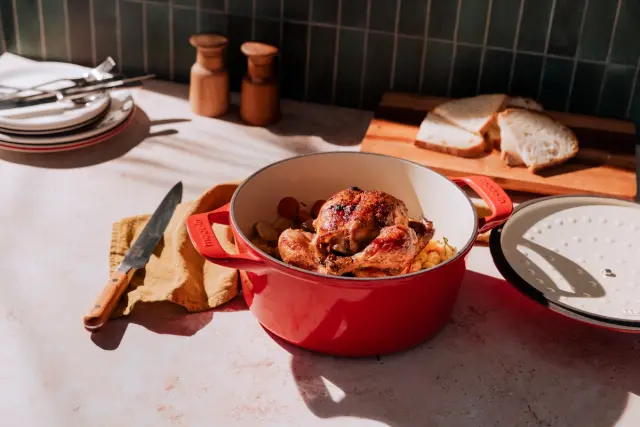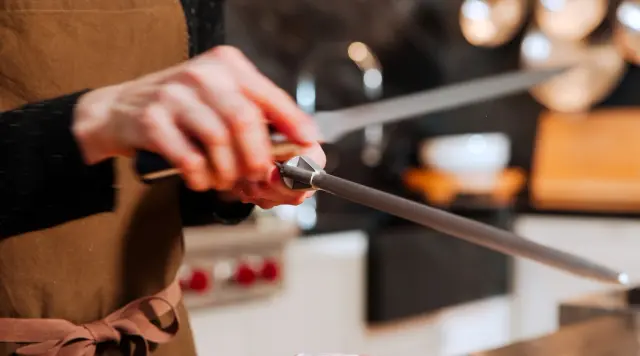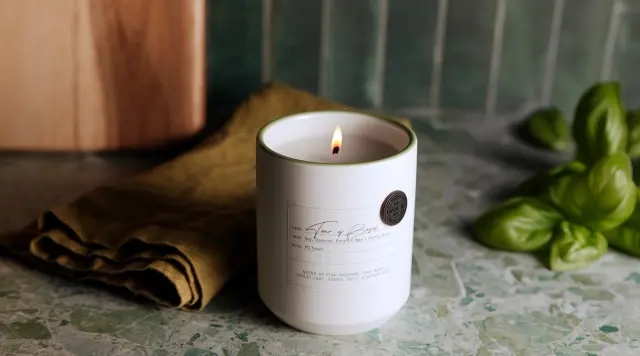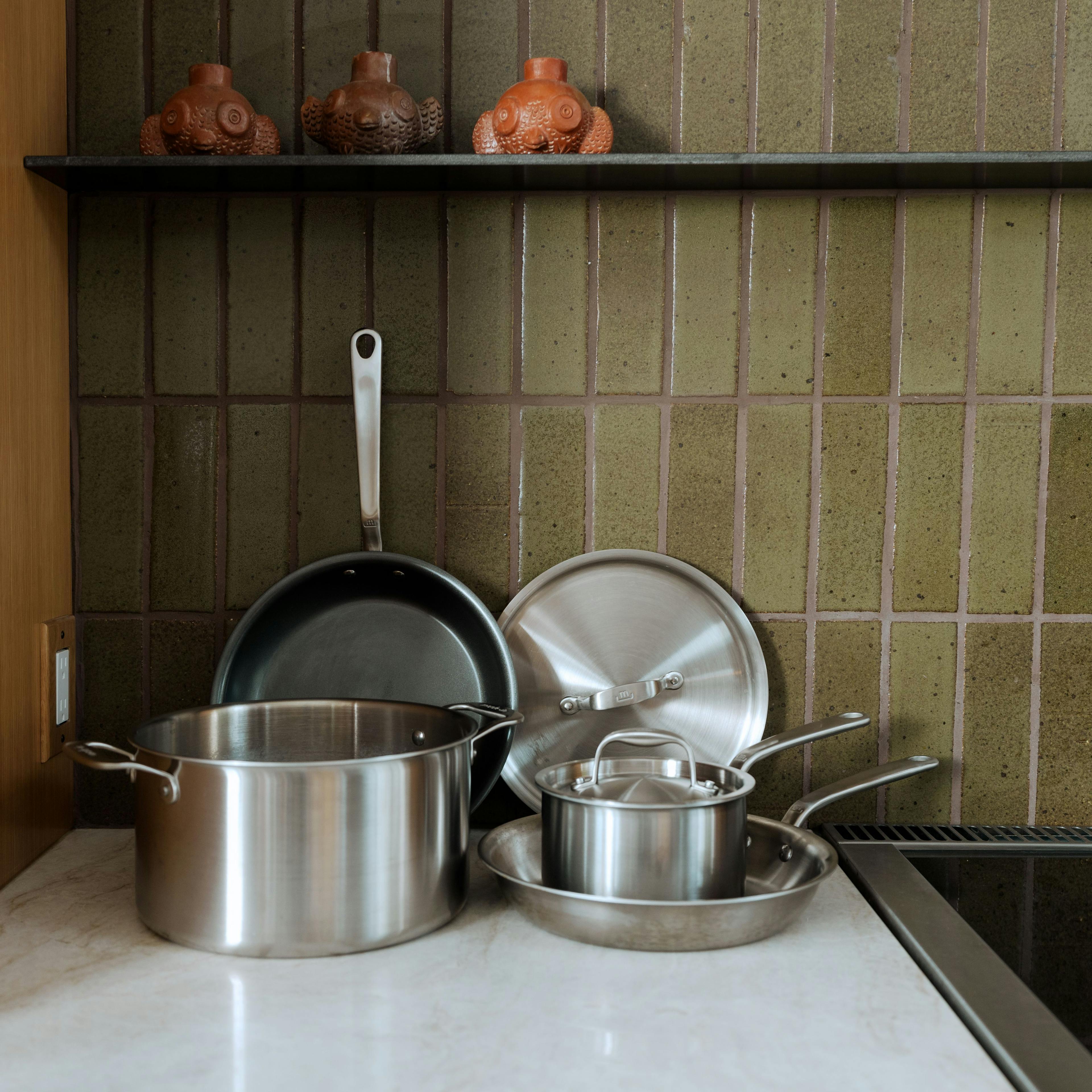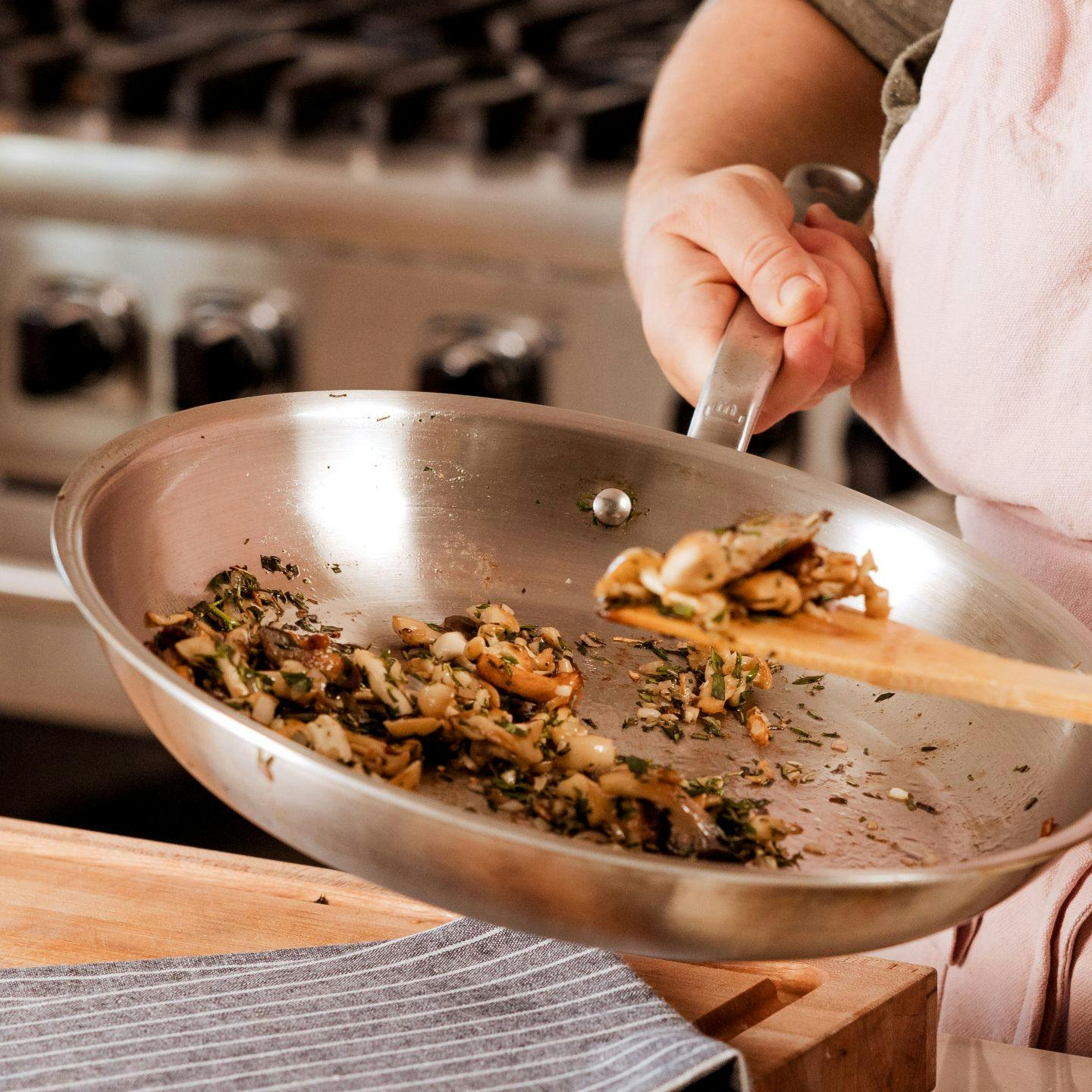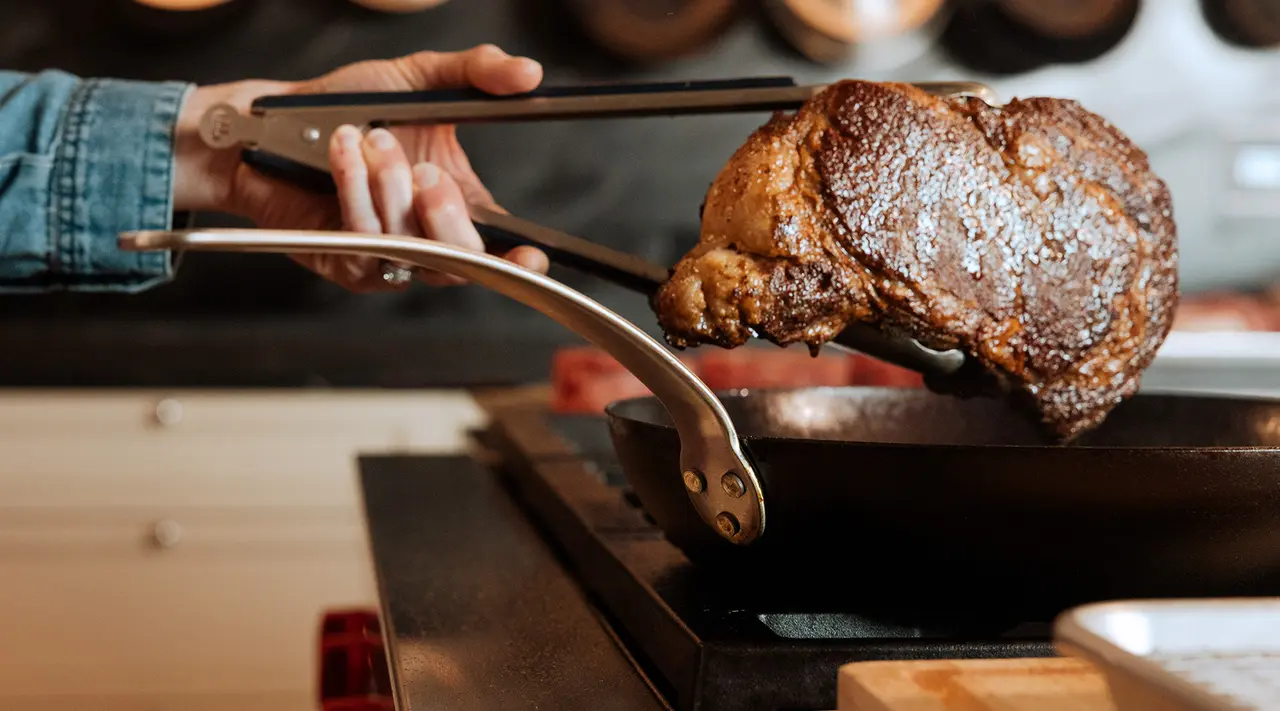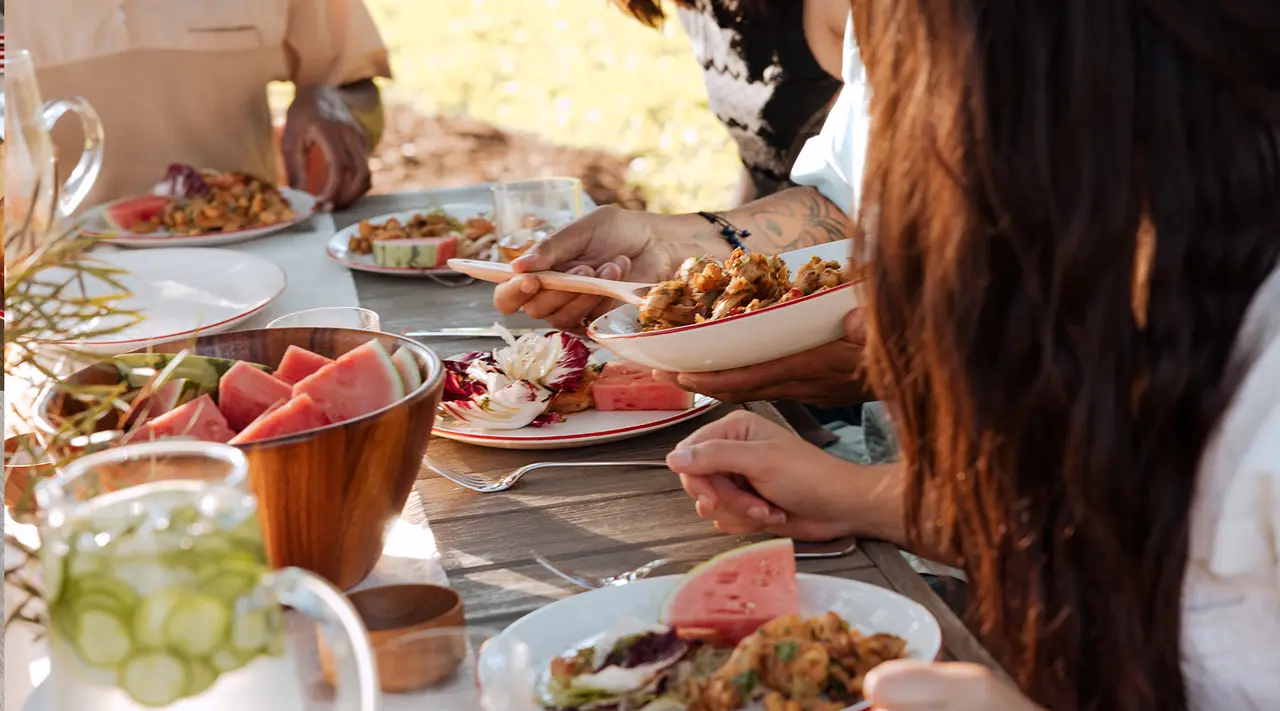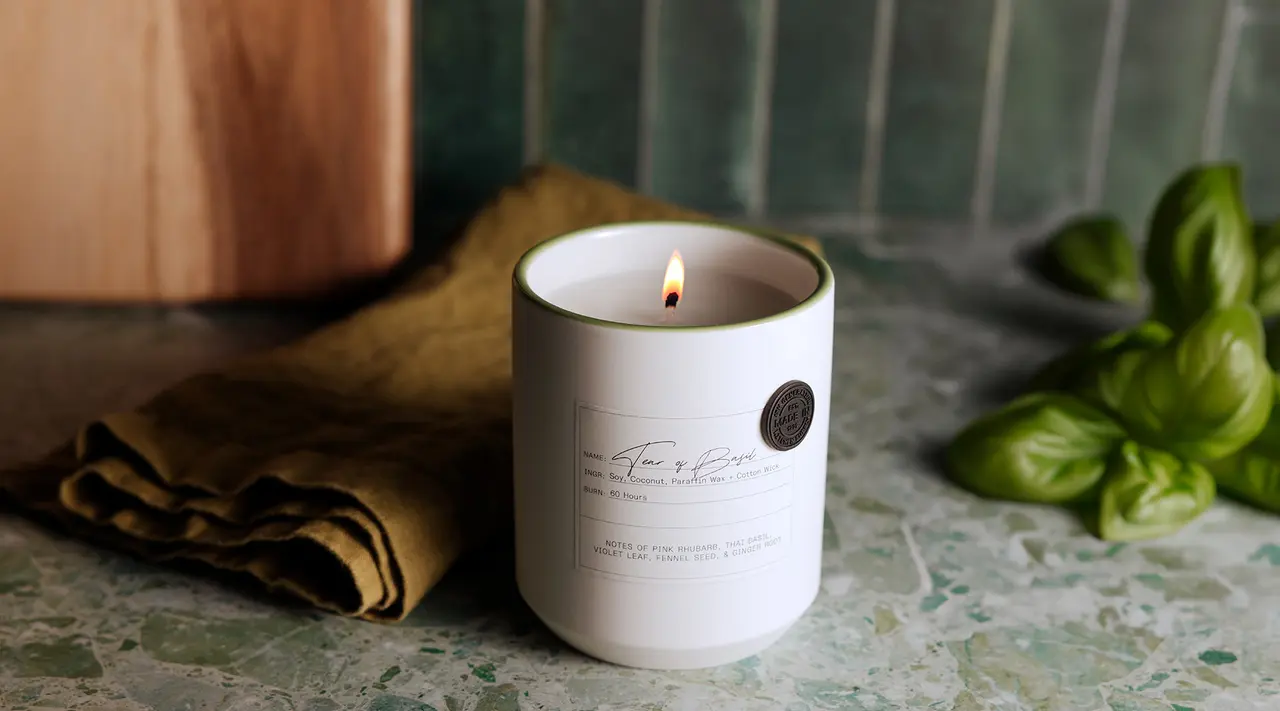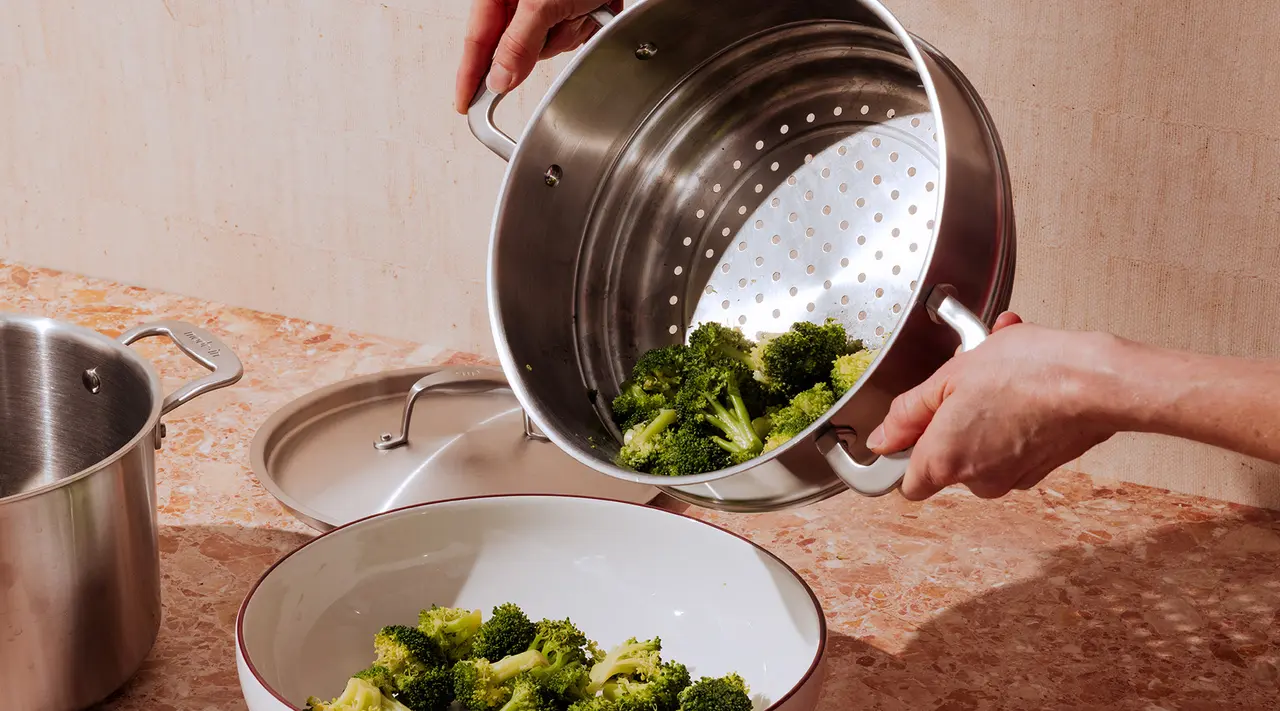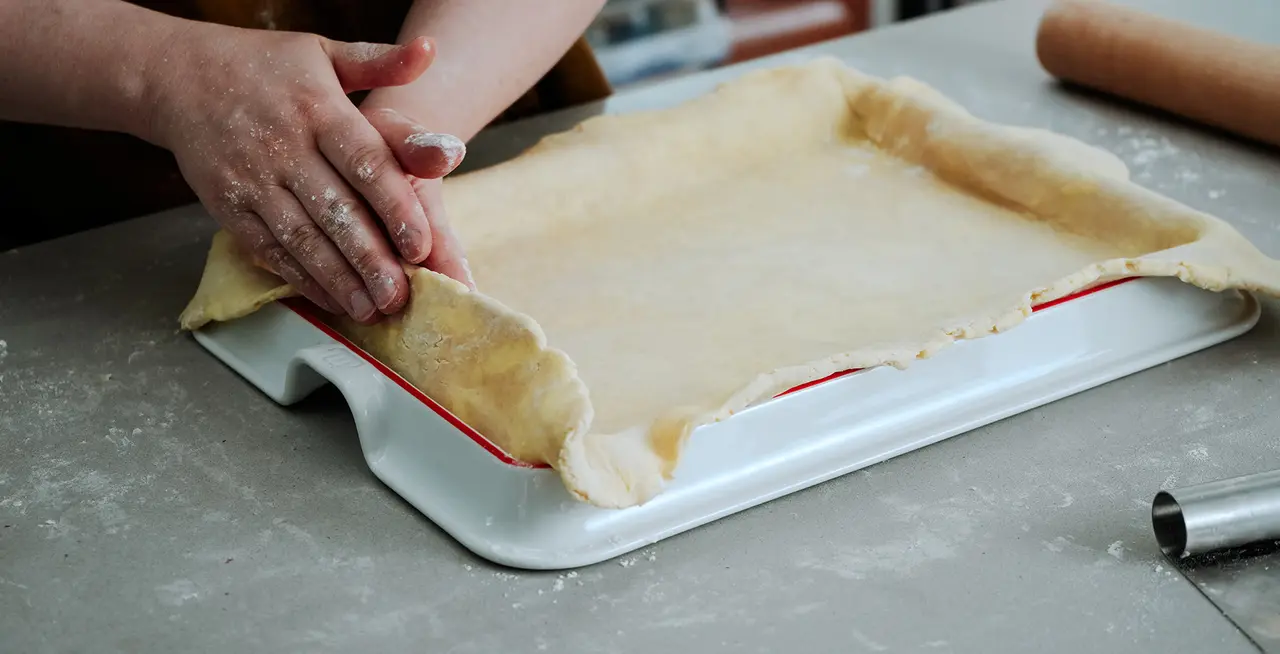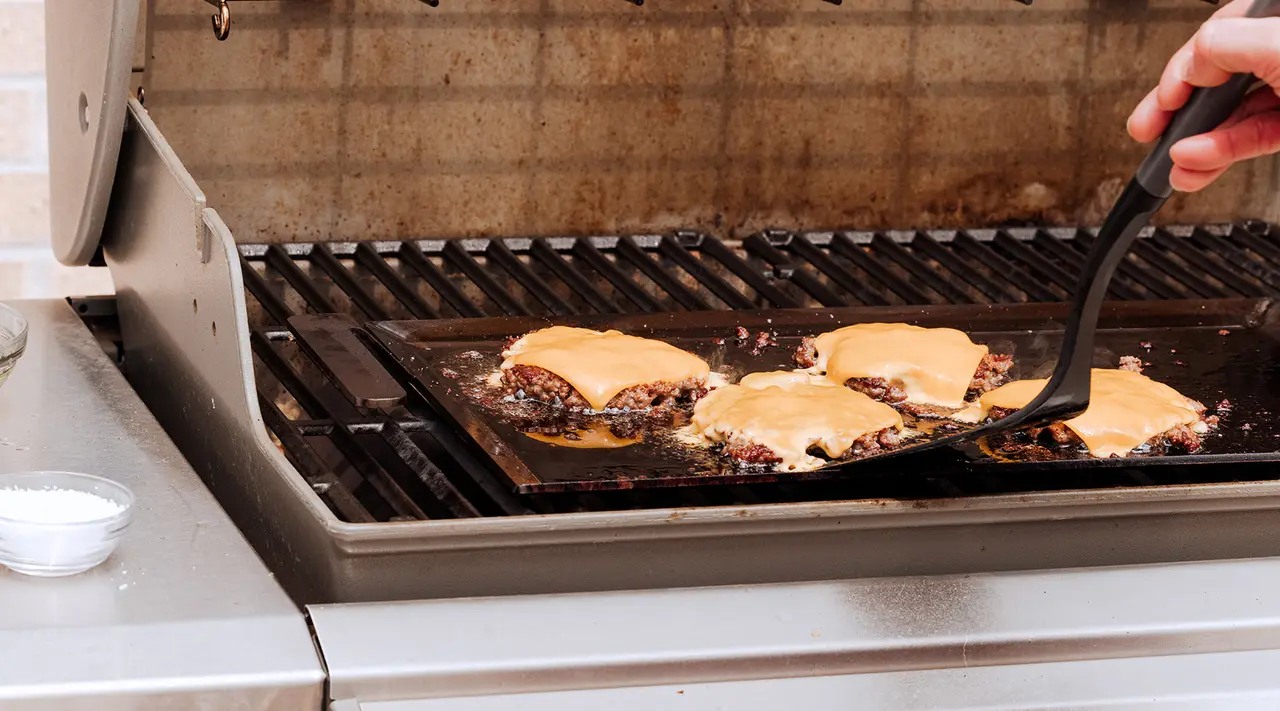Great Knives are essential to cooking. Once you’ve finally found your perfect selection, it’s time to put them to use. Honing your knife skills takes time—no one can chiffonade like a pro on their first attempt. But luckily you’re working with excellent Knives, so the rest is just technique.
First, learn how to hold your knife correctly. If your Knife isn’t brand new, make sure you’ve sharpened it. A stable and sturdy cutting surface is also crucial. You’ll want a wooden or plastic cutting board—anything harder (like a granite cheese board or your kitchen countertop) will dull your blade.
We spoke with Chef Sarah Heard of Austin’s Foreign & Domestic to get her insights into what cutting techniques every chef should learn and master. “Knife cuts are all about getting the right taste and texture,” says Chef Heard. “It’s all about proper incorporation and even cooking.” Follow along with our video or read on for step-by-step directions.
Slice
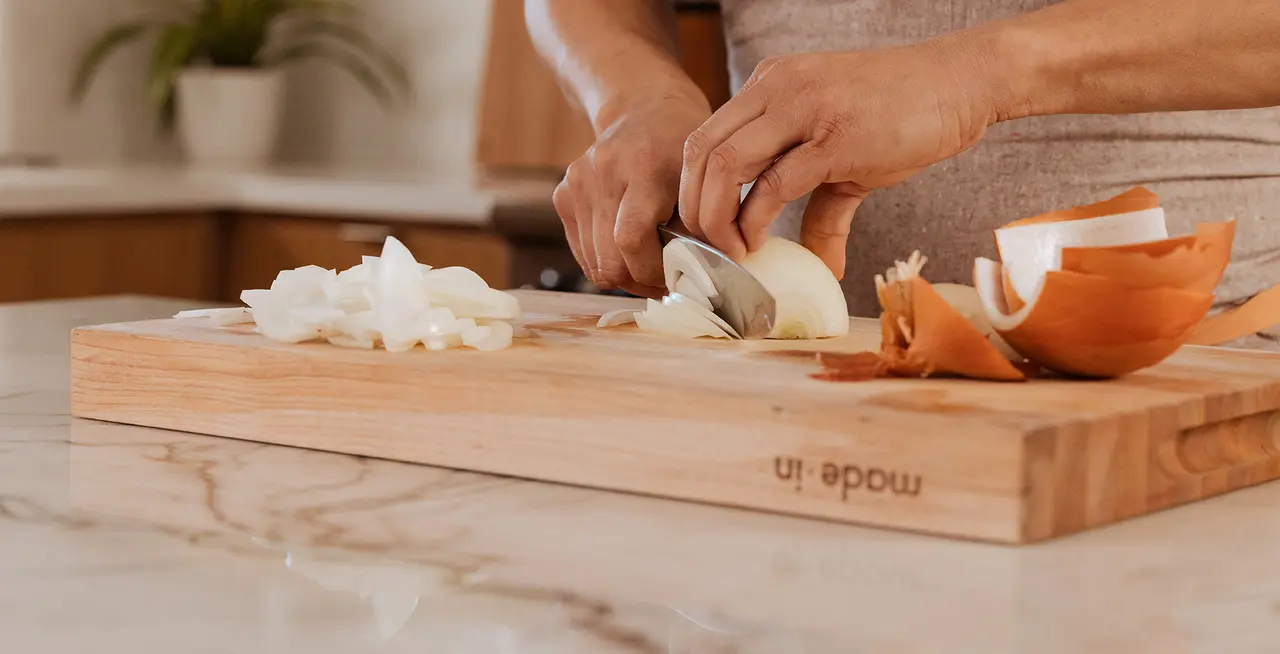
A slice is maybe the most basic cut of all. It’s typically used for meat and large vegetables and can be modified by thickness (i.e. thinly sliced) or shape (half moons for example).
To begin slicing, create a flat surface to your ingredient, usually by cutting it in half. Curl your fingers around the ingredient in a claw-like manner and point the tip of your blade against the cutting board, creating an angle. The flat side of your knife should be resting against your knuckles.
Rock the knife up and down, keeping the tip in contact with your cutting board at all times. As you slice down, the rest of the knife should become parallel to the board. Continue this motion, adjusting the angle to create desired thickness.
“Slicing helps things cook more evenly. Imagine if you just cooked a whole onion, the inside wouldn’t be cooked but the outside would be,” says Chef Heard. Slicing is great for stir fry, where even cooking is especially important. We recommend either our 8 Inch Chef Knife, as they work particularly well with the rocking technique.
Dice (Small, Medium, Large)
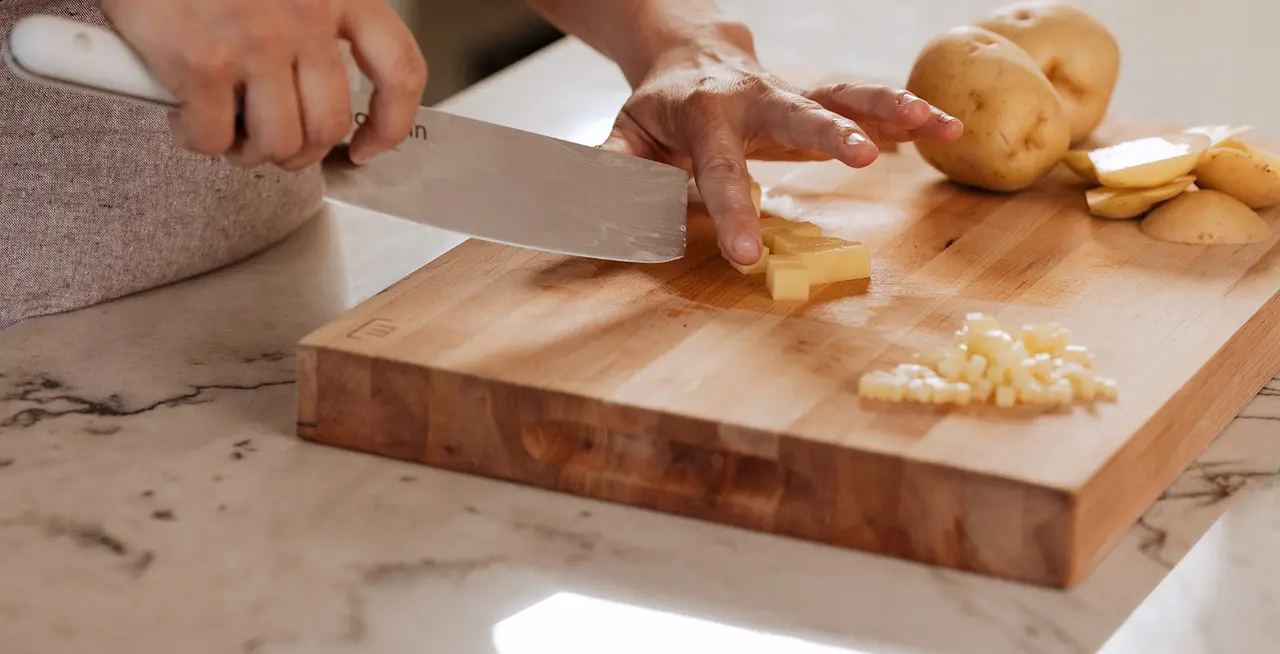
Dicing is the process of cutting into cubes ranging from small to large. The largest size is also called a carré (French for square) and usually measures ¾ of an inch, while medium dice is typically ½ an inch and small is around ¼ of an inch. No need to break out your ruler, unless you’re in culinary school or super-precise geometric shapes are your passion, these don’t have to be perfectly exact.
To create a dice of any size, start with a batonette, or stick cut. To do that, start by squaring off your ingredient and dividing it into 2-inch-wide segments. From there, slice it lengthwise into your desired width and then crosswise. A large dice is best for things with a longer cook-time, think roasted root vegetables, while a medium or small dice can be used in soups and stews.
“For a larger dice, you want that ingredient to be the main flavor,” says Chef Heard. “Medium is somewhere in the middle, and a smaller dice, you want it in the background to add a bit of crunch and texture.” Dicing can be done with any sort of knife, but our Nakiri Knife is particularly useful because its straight front helps keep your little squares even.
Mince
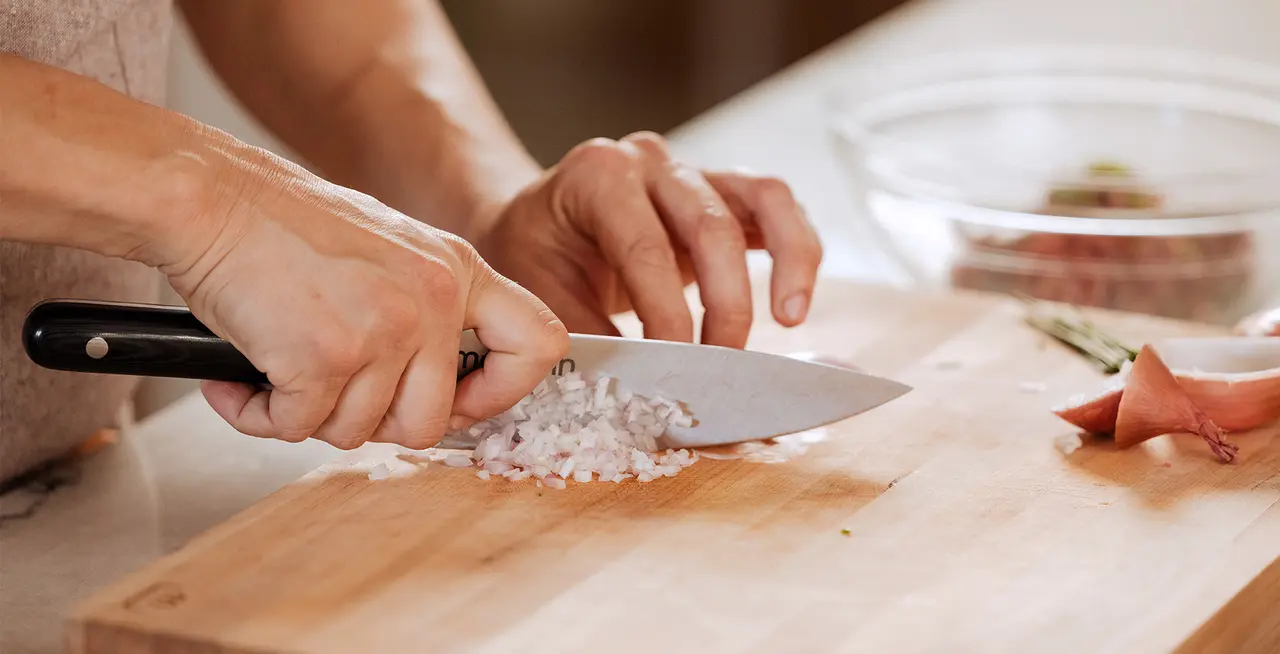
“Mincing is a quick way to get things into small pieces so they can be incorporated into a dish. It’s smaller than a dice and faster,” says Chef Heard. This type of cut is best suited to aromatics, especially pungent ones like garlic or shallots, as well as ingredients that add spice to a dish like ginger or hot peppers. The purpose of mincing is to have the ingredients cut so finely that they distribute their flavor evenly without imparting a distracting texture.
There are a few ways to mince. If you are working with a larger ingredient like a shallot or a knob of ginger, start by splitting it in half lengthwise to create a flat base. Then, make parallel vertical cuts along its length, followed by intersecting horizontal cuts. If the result is not fine enough, gather the pieces into a pile and make a series of downward chops, with your other hand on top of the knife blade.
If you are working with a smaller ingredient like garlic, thinly slice it and then repeat the chopping motion. For herbs, rest the tip of the knife against your cutting board and hold it in place there with your free hand against the top of the blade, then rock the rest of the blade up and down. Both a 6 Inch and an 8 Inch Chef Knife would work well for mincing.
Julienne
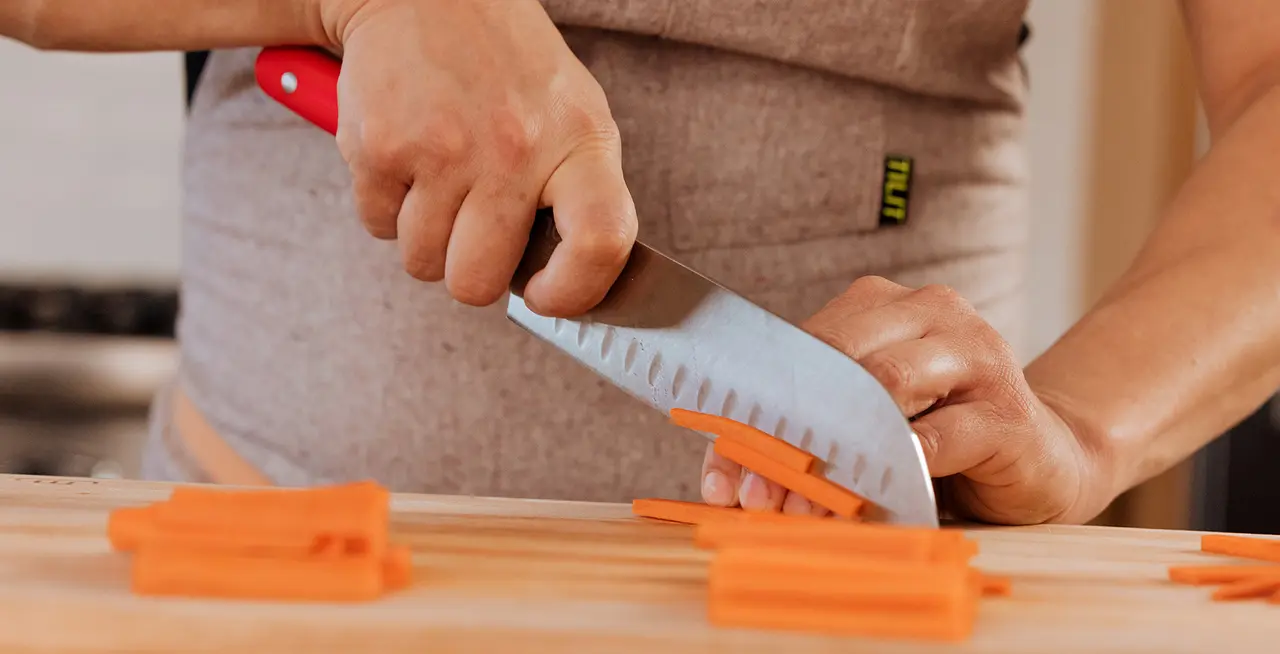
A julienne, also sometimes called a matchstick cut, yields a thin, straight result. It can be used as a garnish (you may see ginger cut this way) or for raw vegetables. Cooked vegetables that are cut this way will likely fall apart because they are so thin. If you do intend on cooking your julienned vegetables, make sure it’s a harder one like a carrot or bell pepper. For example—don’t bother julienning zucchini, as it will simply fall apart.
Typically, a julienne is about 2-inches long and about ¼ to 1/16 of an inch, but again, you don’t need to be exact. First, square off your ingredient, then divide it into 2-inch long rectangular pieces. Slice those as many times as you need to in order to create those narrow strips to resemble a matchstick.
Chef Heard likes using this cut for salads. “If I wanted to add a crisp vegetable to a salad, I would want to do a very fine julienne,” she says. “It’s great for carrots, bell peppers, fennel—tougher vegetables.” To avoid the vegetable sticking to your blade, we recommend our Santoku Knife, which is slightly fluted so the thin strips won’t adhere.
Chiffonade
The fanciest sounding cut of all, chiffonade means “little ribbons” in French. This delicate cut is best suited to herbs like basil and mint, or leafy greens. Use this technique for an impressive garnish or to slice delicate leaves you can fold into a sauce like baby spinach.
Like mincing, the chiffonade is a fine cut, but less precise than a dice or a julienne, so no worries if your slices aren’t all uniform. Start by stacking your leaves as evenly as possible. If you are cutting something larger like kale, you will do exactly as the name says by slicing the leaves into ribbons, as thin as you like. If you are working with herbs for a garnish however, roll the stacked leaves and slice crosswise, as finely as you can.
“I love to chiffonade,” says Chef Heard. “It’s a great way to gently incorporate herbs. You’re basically ensuring that you don’t end up with a whole mint leaf in your mouth when you’re eating a salad, but instead you get little strips mixed in throughout.” The Limited Edition 6 Inch Chef Knife is great for chiffonading because you have more control over the blade, but an 8 Inch will also do.
Now that you know some basic cuts, you can start to experiment incorporating them into your own cooking. Check out our Knife selection to help you find all of the right tools for each of these knife techniques.
